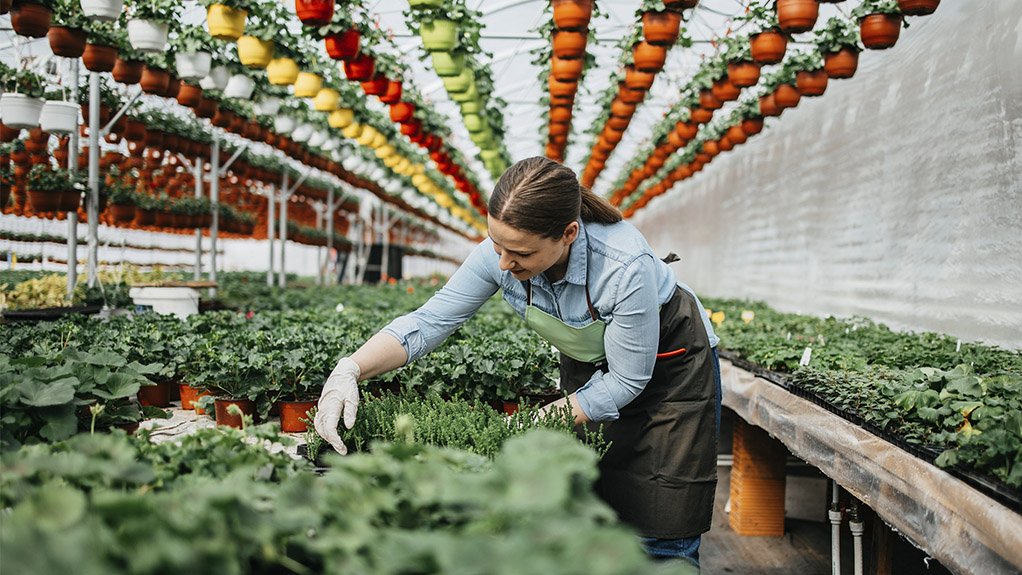There has been a surge of interest during the past six months in alternative agricultural resources, such as growbags and capillary mats, geotextiles manufacturer Fibertex South Africa commercial executive Sefton Fripp tells Green Africa Magazine.
He says although the first half of the year has been erratic, owing to the scarcity of certain resources and a focus on sustainability, any product or service that supports preservation and lowers the consumption of scarce resources has become of interest.
The surge is, therefore, primarily driven by consumer demand, and Fibertex South Africa is taking advantage of this.
“Our current focus is on raising awareness of and gauging interest in alternative geosynthetic-based agricultural solutions. We expect the uptake to be slow, owing to fiscal pressures. However, once the benefits have been experienced by the clients first-hand, we anticipate greater interest and steady growth.”
He adds that, at times when food security is called into question, it is even more important for the agriculture sector and horticulture specialists to make sure they have optimum growth conditions in nurseries and greenhouses.
“A critical part of providing a healthy growing environment for plants is controlled water and fertiliser distribution in optimal amounts to ensure high quality of each vegetable, herb or shrub,” Fripp says.
He explains that the Fibertex team works closely with farmers and horticulturalists globally to continually improve plant-growing conditions through the development and manufacture of ecofriendly products that make it easier to care for plants correctly.
Included in Fibertex’s range of horticulture products are geosynthetics used for constructing growing tunnels and high-density polyethylene drainage pipes, which are ultraviolet (UV) stabilised and offer high-impact resistance to avoid damage during installation. The company’s range of horticulture products also improve mechanical service life and ensure extended service life in exposed propagation environments.
Capillary Mats
Fripp highlights Fibertex’s capillary mats, which have been specially designed for controlled subirrigation for efficient nursery production.
“Their installation in nurseries and greenhouses improves the quality of plants by providing the best growing conditions. Capillary mats ensure uniform water storage and reduced disease, fungus and rot, owing to the controlled water hold,” he explains.
These mats, which are also well suited to computer-controlled watering systems, eliminate dry spots and prevent areas with insufficient fertiliser.
Fripp notes that the capillary mats are simple to cut, without any fraying at the edges, and are easy to join by welding or gluing.
“These durable mats can be reused many times and maintain high strength, even in wet conditions. Additionally, they are easy to clean using a high-pressure cleaner or a firm brush,” he claims.
Fibertex PPR 443 capillary mats are the most popular type of capillary mats for subirrigation with hoses. This range has a good balance between capillary action and water-retention capacity, and is suitable for use in all nurseries and greenhouses.
The highly efficient capillary function of this material allows for the exact control of the dry/wet cycle, ensuring uniform water and fertiliser distribution on sloping benches, sand bottoms and concrete floors.
The grey mats weigh 150 g/m2 and are 1.0 mm thick, with a capillary lift of 8.0 cm. They are available in a maximum roll width of 520 cm and standard length of 100 m.
Fibertex F-80 capillary mats, which have strong filter properties, have been developed for ebb and flood benches, preventing dirt build-up in the nozzles and irrigation system.
Although the main function of this material is filtering, these mats have also been designed to absorb the remaining moisture and distribute it evenly to plants after irrigation is completed.
The white mats weigh 80 g/m2 and are 0.6 mm thick, with a capillary lift of 7.0 cm and a maximum roll width of 520 cm. They are available in a standard length of 200 m.
Fripp says the benefits of using Fibertex’s capillary mats are a more consistent, healthy seedling because of the equal uptake of moisture and nutrients, a reduced loss of growing medium because of watering methods and less water consumption.
“Moreover, the filtration effect from the mats contributes to cleaner wastewater, which can potentially be filtered and recycled,” he adds.
Fripp notes that this technology is employed widely by seedling growers across Europe because they have to maximise yield from limited space.
“Farming is costly, which is why they adopt the best technologies,” he quips.
Fibertex is the largest manufacturer of UV-stabilised virgin polypropylene nonwoven geotextiles produced in Africa, with its products’ durability certified for more than 100 years, in accordance with the latest European Standards.
The Fibertex geosynthetics range encompasses nonwoven and woven geotextiles, gabions and mattresses, drainage pipes and fittings, as well as erosion-control and cellular confinement solutions.
The company also supplies soil reinforcing and stabilising products, including geogrids and geocells, as well as geosynthetic clay liners as part of composite lining systems in modern landfills.





